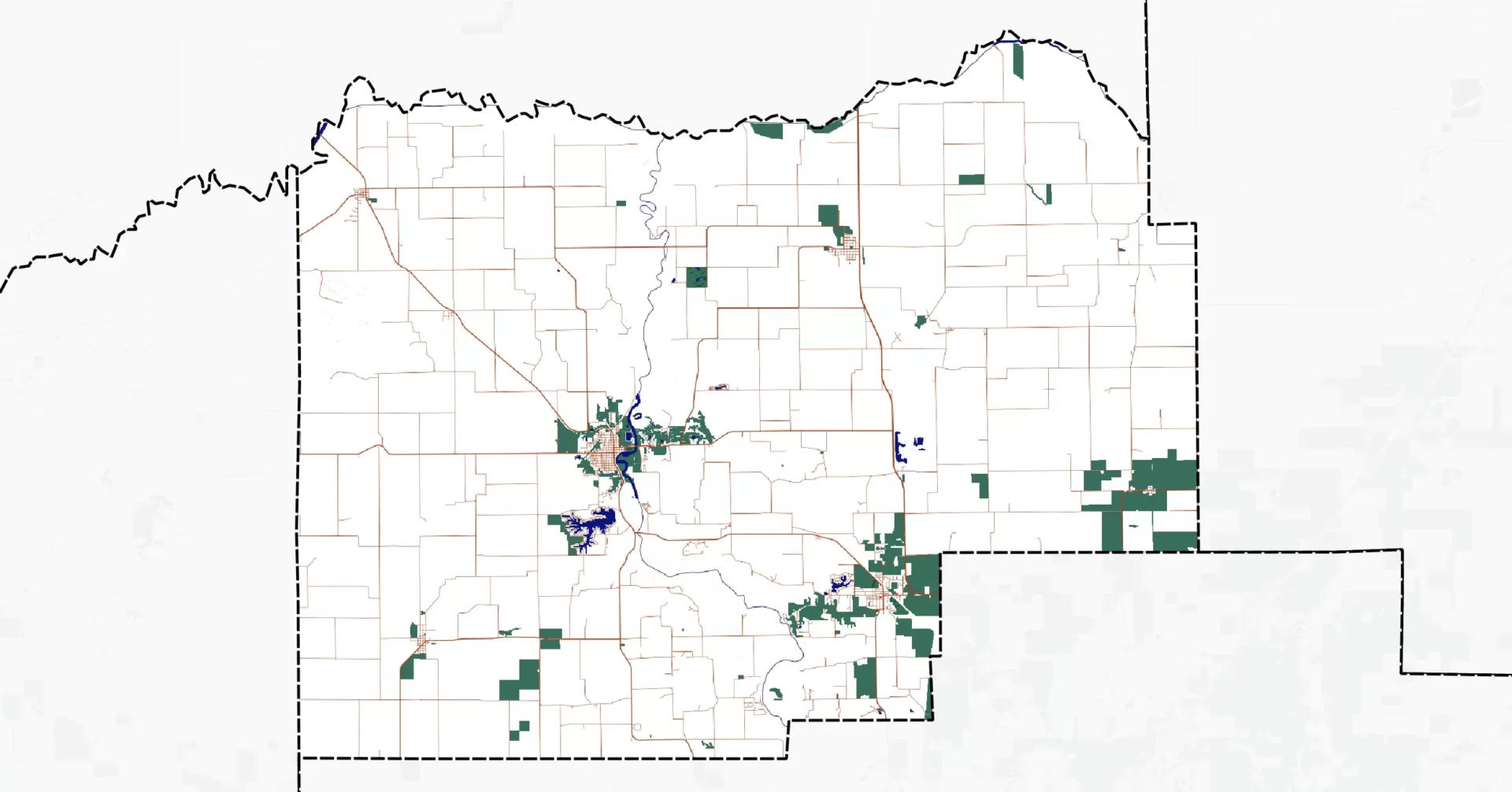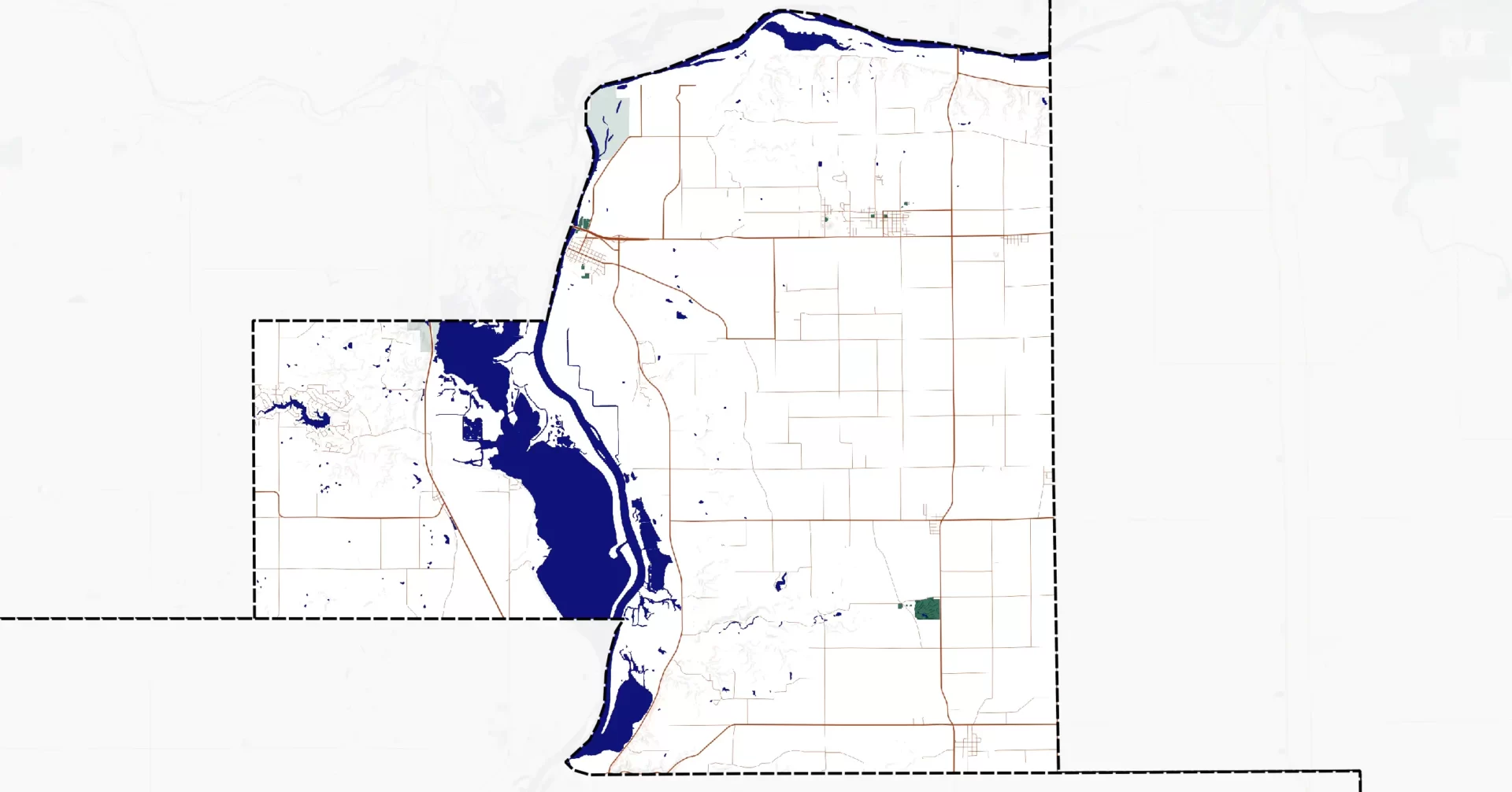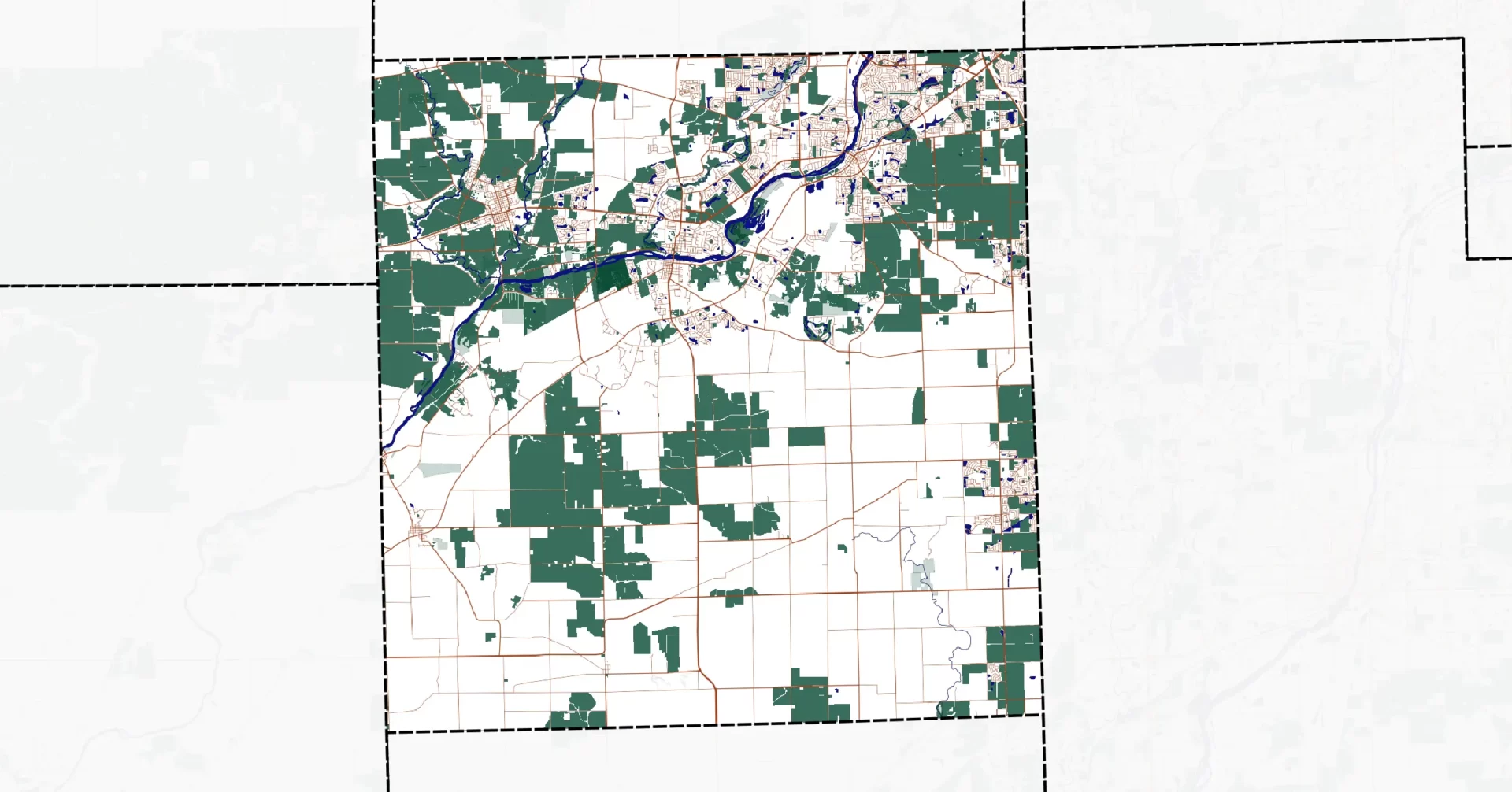15 Richest Counties in Illinois (2023): The Stories of Success
Illinois, often referred to as the “Land of Lincoln,” is a state of remarkable diversity, both in its landscapes and its economic opportunities. From bustling urban centers to serene rural communities, the state offers a wide spectrum of living experiences. In this listicle, we embark on a journey to unveil the 15 richest counties in Illinois, shedding light on their unique histories, economic development, and current median household income values. These counties, scattered across the state, represent a tapestry of economic resilience and growth, each with its own story to tell.
As we delve into the economic narratives of these counties, we will explore the threads that have woven together the fabric of their prosperity. From the agrarian roots of counties like Ogle and Piatt to the suburban allure of McHenry and DuPage, each region reflects the evolving landscape of Illinois’ economy. Through a meticulous examination of their past and present, we aim to paint a comprehensive picture of what it means to thrive in the Land of Lincoln.
Prepare to embark on a journey that traverses time and place, unraveling the intricate tapestry of economic development in Illinois. From the tranquil landscapes of Monroe County to the bustling streets of Kane County, these counties offer not only insights into economic growth but also a testament to the indomitable spirit of their residents who have shaped the state’s fortunes over the years.
Unveiling the Wealthiest Counties
15. Ogle County

Median Household Income: $55,733
Nestled in north-central Illinois, Ogle County has a rich history that dates back to its founding in 1836. Named after Captain Joseph Ogle, a pioneer and soldier, the county’s early years were characterized by agricultural development. Settlers were drawn to the fertile lands along the Rock River, leading to the establishment of farming communities. Ogle County’s economy revolved around agriculture for much of its history, with crops like corn and soybeans playing a vital role in sustaining the local populace.
As the years passed, Ogle County experienced economic diversification. The construction of railroads in the late 19th century facilitated transportation of agricultural products, fostering economic growth. Industries such as manufacturing and healthcare began to emerge, contributing to the county’s economic development. Today, Ogle County maintains its agricultural heritage while embracing new opportunities in education and healthcare. Its median household income, while not the highest in Illinois, reflects the county’s balanced blend of tradition and modernity.
14. Piatt County

Median Household Income: $55,752
Piatt County, situated in the heart of Illinois, has a history steeped in stability. Founded in 1841, the county’s early years were characterized by the construction of roads and infrastructure to connect the surrounding communities. Agriculture played a central role in Piatt County’s economy, with fertile soils supporting the growth of crops like corn, wheat, and soybeans. This agricultural base formed the backbone of the county’s economy for generations.
In the 20th century, Piatt County saw the expansion of its economy beyond agriculture. The growth of manufacturing, healthcare, and education sectors brought new opportunities to residents. The county’s proximity to the University of Illinois in Urbana-Champaign further fueled its economic development. Today, Piatt County stands as a testament to the enduring strength of rural communities. Its median household income, while not the highest in the state, reflects a well-rounded economy that values tradition and progress.
13. Menard County

Median Household Income: $56,230
Menard County, founded in 1839, has a history marked by the confluence of past and present. Named after Pierre Menard, the first Lieutenant Governor of Illinois, the county’s early years were influenced by the development of the state’s capital, Springfield, just to the south. Agriculture played a vital role in Menard County’s economy, with farms supplying the burgeoning city with food and resources.
Over time, Menard County evolved economically. The construction of railroads and highways facilitated transportation and trade, leading to the growth of industries beyond agriculture. Today, the county maintains its historical charm while embracing a diverse economy that includes healthcare, manufacturing, and education. Menard County’s median household income, though not the highest, reflects its ability to balance its rich past with a forward-looking approach to economic development.
12. Putnam County

Median Household Income: $56,458
Putnam County, established in 1825, has a history intertwined with the natural beauty of its surroundings. Named after Israel Putnam, a general in the American Revolutionary War, the county’s early years were marked by exploration and appreciation of its scenic landscapes along the Illinois River. Agriculture became a cornerstone of the local economy, with farmers cultivating the fertile soil to produce crops that sustained the growing community.
In the 20th century, Putnam County began to capitalize on its natural beauty. Tourism and outdoor recreation became significant contributors to the economy, drawing visitors to its parks, forests, and waterways. While agriculture remains important, the county has diversified its economy by embracing small-scale manufacturing and service industries. Putnam County’s median household income reflects its ability to nurture its natural assets while adapting to changing economic landscapes.
11. McLean County

Median Household Income: $57,642
McLean County, founded in 1830, is often referred to as the “Heart of Illinois” due to its central location within the state. The county’s early history was shaped by pioneers and settlers who were drawn to its fertile soil. Agriculture quickly became the backbone of the local economy, with McLean County’s farms producing bountiful harvests of corn, soybeans, and livestock.
As the county grew, so did its economic diversity. The establishment of Illinois State University in the 19th century brought education to the forefront, while the expansion of transportation networks, including railroads and highways, facilitated trade and commerce. Today, McLean County boasts a well-rounded economy that includes agriculture, manufacturing, healthcare, and education. Its median household income reflects the economic opportunities available in this thriving region at the heart of Illinois.
These four counties offer a glimpse into the economic development journey of different regions in Illinois. From agricultural roots to diversification into various industries, each county’s history and current economic status showcase the state’s resilience and adaptability. Whether driven by natural beauty, historical significance, or educational institutions, these counties have played their unique roles in shaping the economic landscape of Illinois.
10. Boone County

Median Household Income: $61,210
Boone County, located in the northern part of Illinois, has a history closely tied to its position near the city of Rockford. Established in 1837, the county’s early days were marked by the growth of small farming communities. Agriculture, particularly dairy farming, played a significant role in the local economy, supplying dairy products to neighboring regions.
The 20th century brought industrialization and economic diversification to Boone County. The proximity to Rockford’s manufacturing hub led to the growth of industries such as aerospace, automotive, and healthcare. Boone County’s strategic location along major transportation routes further enhanced its economic development. Today, the county enjoys a median household income that reflects its robust economy, making it an attractive destination for those seeking both economic opportunity and a suburban lifestyle.
9. Grundy County

Median Household Income: $64,297
Grundy County, situated southwest of Chicago, has a history that mirrors the evolution of many rural communities. Founded in 1841, the county’s early years were marked by the establishment of farming communities. Agriculture, including the cultivation of corn and soybeans, became the backbone of the local economy.
In the 20th century, Grundy County began to diversify its economic base. Manufacturing, logistics, and distribution industries found a home in the county, thanks to its strategic location along major highways and the Illinois River. The county’s median household income reflects its ability to balance its agricultural heritage with a modern, diverse economy. Grundy County offers residents a high quality of life while preserving its small-town charm.
8. Woodford County

Median Household Income: $65,890
Woodford County, known for its scenic beauty and strong agricultural heritage, has a history that mirrors the agricultural evolution of Illinois. Established in 1841, the county’s early days were dominated by farms and small communities. Agriculture, including the cultivation of corn, soybeans, and wheat, remained central to the local economy.
Over time, Woodford County adapted to changing economic landscapes. While agriculture continues to thrive, the county has diversified into agribusiness, manufacturing, and healthcare. Its proximity to major transportation routes has facilitated the growth of industries and commerce. Today, Woodford County boasts a median household income that reflects its ability to preserve its rural charm while embracing economic progress.
7. Kane County

Median Household Income: $67,767
Kane County, one of the collar counties surrounding Chicago, has a history shaped by its proximity to the Windy City. Established in 1836, the county’s early years were influenced by its location along the Fox River and the expansion of railroads. Agriculture played a pivotal role, with farmers producing grains and dairy products for the growing urban population.
As Chicago expanded, so did Kane County’s economic horizons. The county’s strategic location between the city and rural areas made it an attractive destination for both residents and businesses. The growth of industries, including manufacturing, healthcare, and technology, has diversified Kane County’s economy. Its median household income reflects the economic opportunities available in this dynamic region, where urban and rural lifestyles coexist.
6. Monroe County

Median Household Income: $68,253
Monroe County, located in southern Illinois, boasts a history that highlights the symbiotic relationship between its natural beauty and economic prosperity. Founded in 1816, the county’s early years saw the exploration and appreciation of its scenic landscapes, including the Mississippi River. Agriculture became a vital economic driver, with fertile soil supporting crops like corn, soybeans, and wheat.
The 20th century brought opportunities for Monroe County to leverage its natural assets. Tourism and outdoor recreation became significant contributors to the economy, drawing visitors to its parks, forests, and waterways. The county also diversified into manufacturing, healthcare, and education. Today, Monroe County’s median household income reflects its ability to balance its rich natural heritage with a diverse and thriving economy, making it a desirable destination for residents seeking a high quality of life.
5. Will County

Median Household Income: $75,906
Will County, a major player in the Chicago metropolitan area, has a history marked by its role as an economic powerhouse. Established in 1836, the county’s early years were characterized by its proximity to Chicago and its fertile farmlands. Agriculture, transportation, and trade flourished, thanks to the Des Plaines River and the Illinois and Michigan Canal.
In the 20th century, Will County’s strategic location and infrastructure attracted industries and businesses. The county’s economic landscape diversified into manufacturing, logistics, healthcare, and technology. Its accessibility to the city and suburban amenities have made it a sought-after destination for both residents and businesses. Today, Will County boasts a median household income that reflects its thriving economy and its status as a suburban hub within the Chicago metropolitan area.
4. McHenry County

Median Household Income: $76,482
McHenry County, nestled in the northwest suburbs of Chicago, has a history that reflects its suburban charm and economic growth. Established in 1836, the county’s early days were characterized by farming communities and the Fox River, which provided both transportation and recreation. Agriculture, including dairy farming, played a pivotal role in the local economy.
As Chicago’s suburbs expanded, McHenry County experienced rapid growth. The county’s proximity to the city and natural beauty attracted residents and businesses alike. A diverse range of industries, including manufacturing, healthcare, and retail, emerged, contributing to the county’s economic prosperity. Today, McHenry County boasts a median household income that reflects its status as a suburban destination that offers both urban amenities and a high quality of life.
3. DuPage County

Median Household Income: $76,581
DuPage County, another key player in the Chicago metropolitan area, ranks third on our list. Established in 1839, the county’s early history was marked by agriculture, with farms producing grains and dairy products. However, the county’s proximity to Chicago and its transportation infrastructure paved the way for economic diversification.
In the 20th century, DuPage County transformed into a hub of innovation and affluence. The county attracted technology, healthcare, finance, and educational institutions, leading to a thriving job market and a diverse economy. World-class amenities, excellent schools, and cultural attractions contributed to its status as a desirable place to live and work. DuPage County’s median household income reflects its economic prowess and the opportunities available in this dynamic suburban region.
2. Lake County

Median Household Income: $78,948
Lake County, situated along the shores of Lake Michigan, enjoys a thriving economy and a median household income that reflects its affluence. Established in 1839, the county’s early years were influenced by its scenic beauty and access to the lake. Agriculture, particularly fruit orchards, played a role in the local economy.
In the 20th century, Lake County’s natural assets and strategic location led to economic diversification. The county attracted industries such as healthcare, technology, manufacturing, and finance. Its proximity to both Chicago and the lake, along with picturesque communities, made it an appealing destination for residents and businesses. Today, Lake County stands as one of Illinois’ wealthiest regions, offering a blend of economic opportunity and natural beauty.
1. Kendall County

Median Household Income: $79,897
Topping our list is Kendall County, where residents enjoy the highest median household income in Illinois. Established in 1841, the county’s early history was marked by agricultural development, with farms producing grains and livestock.
Kendall County’s economic transformation over the years has been remarkable. The county’s strategic location, excellent schools, and a growing job market have made it an attractive destination for residents seeking economic prosperity. It offers a blend of suburban living, access to the city, and a strong local economy. Kendall County’s median household income reflects its status as the epitome of economic prosperity in Illinois.
Conclusion
| RICHEST COUNTIES IN ILLINOIS | |
| COUNTY | MEDIAN HOUSEHOLD INCOME (2021) |
| Kendall | $79,897 |
| Lake | $78,948 |
| DuPage | $76,581 |
| McHenry | $76,482 |
| Will | $75,906 |
| Monroe | $68,253 |
| Kane | $67,767 |
| Woodford | $65,890 |
| Grundy | $64,297 |
| Boone | $61,210 |
| McLean | $57,642 |
| Putnam | $56,458 |
| Menard | $56,230 |
| Piatt | $55,752 |
| Ogle | $55,733 |
Source of this table: United States Census Bureau (USCB) (Data from Illinois)

In the mosaic of Illinois’ counties, each offers its unique blend of charm, economic vitality, and community spirit. From the urban sophistication of DuPage County to the rural tranquility of Putnam County, Illinois has something to offer everyone. These 15 counties provide a snapshot of the state’s economic diversity, and each has its own story to tell, making Illinois a dynamic and exciting place to call home. So whether you’re seeking bustling city life or a quieter rural escape, the Land of Lincoln has a county that suits your needs and aspirations.
These counties, with their rich histories and thriving economies, represent the embodiment of the American dream—a dream of opportunity, growth, and prosperity. They serve as beacons of hope for those seeking a better future, where hard work, innovation, and community come together to create success stories. As we conclude our exploration of Illinois’ wealthiest counties, we are reminded that the state’s strength lies in its diversity and adaptability, and its promise extends to all who call it home.






